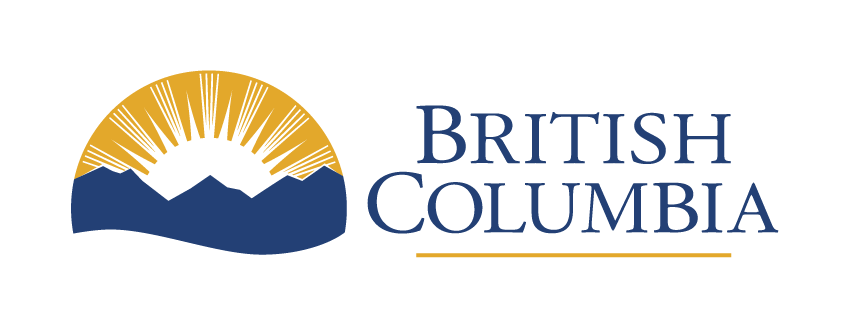Managing and protecting cultural and heritage resources
|

Ministries across the B.C. government are responding to the Digital Plan’s calls to action with new services, products and practices. We’re excited to showcase the teams working to build an inclusive, accessible and connected BC Public Service.
In today’s post, the Ministry of Tourism, Arts, Culture and Sport shares how they migrated historic site and fossil data to a new platform for better responsiveness and improved data management.
The provincial government has a responsibility to protect and manage both cultural resources and natural heritage resources. Two systems that enable this work recently went through a historic update as they moved to a new data management platform, ensuring these resources can be better supported.
The BC Register of Historic Places
With a focus on historic sites, this system contains information on over 5,000 registered sites officially recognized for their heritage value by the province, the federal government or a local government. These sites include buildings, neighbourhoods, trails and cultural landscapes that contribute to our province’s rich and unique identity. The register also supports the provincial government’s land use decisions, heritage conservation projects and public awareness initiatives.
The BC Fossil Management System
This system contains information on all values of fossils found in the province, including their scientific, heritage, educational and recreational/tourism value. It provides a secure location for fossil data, supports controlled access by different groups and offers engagement and collaboration opportunities with external partners.
The migration initiative for these two systems was led by the Heritage Branch and the Fossil Management Office in the Ministry of Tourism, Arts, Culture and Sport, with project management and project communications support from the Natural Resource Information and Digital Services division in the Ministry of Water, Land and Resource Stewardship. Together, these teams helped bring the systems to the open-source data management platform Arches.
The strength of Arches

Arches is a web-based, enterprise-level information management platform used by municipal, provincial and federal agencies around the world. It was chosen as a replacement for the heritage resource system because it supports the protection and management of heritage resources in B.C. while increasing collaboration with Indigenous Peoples, institutional partners, local governments and members of the public.
Arches was also chosen for the province’s fossil management database because its platform design offers a foundation for fossil site protection, impact prevention and access management of fossil resources.
Finally, the platform includes features that support transparent and accountable digital service delivery. It enhances data discovery and visualization through:
- Search abilities (keyword and structured data)
- Geospatial tools (such as mapping to visualize and query locations)
- Relationships between resources (displayed in an interactive graph)
- Temporal data integration (the Extended Date/Time Format allows temporal searches and capturing fuzzy dates)
- Customizable report generation
And it enhances data management through:
- Multiple import pathways (including CSV, JSON and shapefile uploads and mobile data collection)
- Semantic data generation (for interoperable and sustainable data)
- Controlled vocabularies (to ensure data quality and meaningful searches)
- Access authorizations (for secure access management)
Building community and working in the open

The launch of the two new systems has contributed to the creation of a collaborative digital government community.
Organizations worldwide use the Arches platform, including federal partner Parks Canada to replace the current Canadian Register of Historic Places. Joining the Arches community has created connections with global heritage groups, allowing for better knowledge sharing and system development.
“We’re excited to be part of the global Arches community,” said Brett Ferguson, the lead full stack developer supporting the project. “When transitioning fossil data, we required a cross-resource model search where multiple criteria, such as a fossil collection event and a species name, could be pulled into a single search result. We worked with a group of core Arches developers and were able to build it before the system launch. The solution benefits the BC Fossil Management System, the BC Register of Historic Places and the future BC Archaeological Platform, and is now available to international heritage organizations.”

That connectivity also extends to the public. Members of the public can access the BC Register of Historic Places with an intuitive search tool to find relevant information about historic site records, including information on the site, the official recognition system, statements of significance, when it was constructed, what its character defining elements are and any available images.
Meanwhile, the BC Fossil Management System allows people to both access information about known fossil occurrences and help to build the inventory by contributing new information about fossil discoveries.
Next steps
Access to the BC Fossil Management System is currently restricted to staff in the Heritage Branch for testing and populating and will be rolled out to provincial government and industry in the fall of 2025. A public site will be launched in 2026 which will include general information about fossils in B.C.
The completed migration will lay the groundwork for the move of a third heritage resource dataset – archaeological site information – to Arches, this time done by the Ministry of Forests.
This successful initiative lines up with the province’s Heritage Conservation Act Transformation Project, which aims to reform the Heritage Conservation Act to align with the UN Declaration on the Rights of Indigenous Peoples, better meeting the needs of all people in B.C. as our history continues to be written.

More information
- Learn to search historic site records on the BC Register of Historic Places by term, keyword or address
- BC Register of Historic Places: heritage@gov.bc.ca
- BC Fossil Management System: Fossil.Management@gov.bc.ca
